- William Zahner
- https://education.sdsu.edu/crmse/members/zahner
- Associate Professor
- CAREER: Designing Learning Environments to Foster Productive and Powerful Discussions among Linguistically Diverse Students in Secondary Mathematics
- http://meld.sdsu.edu
- San Diego State University
- Ernesto Calleros
- Graduate Research Assistant
- CAREER: Designing Learning Environments to Foster Productive and Powerful Discussions among Linguistically Diverse Students in Secondary Mathematics
- http://meld.sdsu.edu
- SDSU Center for Research in Mathematics and Science...
- Kevin Pelaez
- San Diego State University
- CAREER: Designing Learning Environments to Foster Productive and Powerful Discussions among Linguistically Diverse Students in Secondary Mathematics
- http://meld.sdsu.edu
Public Discussion
Continue the discussion of this presentation on the Multiplex. Go to Multiplex



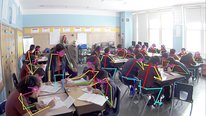
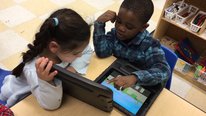
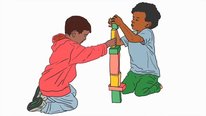
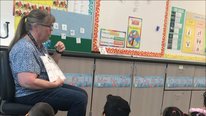
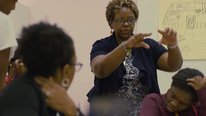
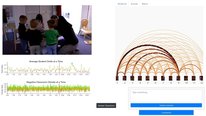
William Zahner
Associate Professor
Thank you for visiting our video! You can learn more about our project on our website at http://meld.sdsu.edu.
We have been collaborating with teachers to develop lessons and redesign high school math classroom learning environments in order to build on the resources of multilingual students. We are doing this design research work in the context of a large, comprehensive, public school located near the US-Mexico border and serving a linguistically diverse student population. We are excited to share these preliminary findings from our work. In this video we (very briefly!) described three ways we have documented the effects of our design efforts.
We would love to engage in a discussion of how else we can document the effects of our design research efforts when done in the context of the complex systems of a large high school.
Also, given the current widespread transition to remote learning, we are interested in discussing ideas for how to design and implement "discussion-based" learning in remote learning modalities, particularly thinking of multilingual learners.
Jim
Hi Bill,
This looks awesome. Where can we see examples of units you and the teachers co-designed?
Jim
William Zahner
Associate Professor
Great question! We’ve uploaded two curriculum samples here: https://meld.sdsu.edu/index.php/curriculum/. These include the lesson plan, student handouts, additional materials, and a short video describing the goal and flow of the lesson. You’ll notice that in these lessons we have incorporated many of the Math Language Routines from the paper by you and your colleagues from Understanding Language, “Principles for the Design of Mathematics Curricula: Promoting Language and Content Development.” We found that adding these routines were very helpful to support student engagement in discussions as we designed the lessons. (And while you are at the project website, check out the cool icons that Kevin designed for the MLRs!)
Ed Robeck
Director
Great project. Having spent some time around the EL community, I think it is great that you are engaging with issues of support so directly. I find the "discourse moves" especially interesting. Where did those come from? Are they a subset of a larger literature? Are they specific to EL students?
Kevin Pelaez
San Diego State University
Thanks for this question, Ed. In this project we developed our design principles and research instruments based on prior research. For the instructional design principles, we drew on research on student learning in the domain of linear functions (e.g., the work of Joanne Lobato). Focusing in your question, for the discourse moves, we have used more content-general tools such as the math talk moves in Chapin, O’Connor, & Anderson’s book “Classroom Discussions in Math.” For routines and structures specific to building on the assets of multilingual students, we have used work by Driscoll, Nikulah, & DePiper (“Mathematical thinking and communication: access for English learners”), as well as the “Math Language Routines” from Zwiers et al. at Understanding Language. This is not a comprehensive list, but a few of the resources we have used.
You didn’t ask, but for what it is worth, for the analysis, we used methods of classroom discourse analysis, starting with the work of Courtney Cazden as a launching point. We also drew on Judit Moschkovich’s Academic Literacy in Mathematics framework, which is more specific to multilingual learners and focuses on the interdependence of mathematical discourse, practices, and proficiency.
Throughout all aspects of the project we draw on research and expertise from scholars in math education, including our advisory board members Judit Moschkovich, Kathryn Chval, Roschelle Gutierrez, Al Cuoco, Richard Barwell, and Joanne Lobato.
Your question makes us think that one useful resource we can add to our website is a bibliography of resources for others who are doing similar work. Thanks for your question!
Deni Basaraba
David Campbelll
Program Director (retired)
Helping teachers learn how to respond to student questions and adjust their lesson plan accordingly is extremely valuable. Have you noticed if teachers have difficulty balancing the tension between encouraging discourse and “staying on track” with the cuuriculum
Ernesto Calleros
Graduate Research Assistant
David, thanks for your question. We have definitely noticed this, and it’s an ongoing tension. We know from research that students learn more when they delve deeper into a few topics rather than superficially cover many topics. Nonetheless, this is a challenge that the teachers we worked with face all the time. If you have a solution, we would love to hear it.
Jeffrey Ram
This is a big problem with our project: the tension between the prescribed curriculum and the excitement and frustration that teachers who have learned things slightly "off topic" in our PD activities experience when they want to transfer that excitement and new ideas to their students. We work with grade 5--an age that is so important in future career choices of students. I tend to urge "create the best, most exciting learning opportunity for the teachers" while others insist "whatever it is, we have to stick to the prescribed curriculum." Tension, indeed.
Michael I. Swart
Great work. In our work developing an AR tool for teaching and learning mathematics, we had the pleasure of working with an entire section of ELL/LEP students. While our work does not explicitly focus on EL, our work does focus on providing multiple ways for students to express their understandings - in particular, we look at the role of gesture both as a scaffold (i.e., directed actions that depict transformations) and as a means for students to offload their procedural and conceptual understandings. This proved to be especially helpful for the EL students when they were unfamiliar with the terminology of the mathematical formalisms and could be an additional pedagogy that you could integrate into your work.
Ernesto Calleros
Steven Greenstein
Ernesto Calleros
Graduate Research Assistant
Michael, thank you for sharing this information with us. We agree with you that gestures are very important, especially in linguistically diverse settings. As part of our design, we incorporated multi-representational (e.g., equations, graphs, etc.) and multi-modal forms of communication (e.g., drawing pictures, manipulating representations, talking in whole-class and small group discussions, acting out mathematical contexts/ideas, etc.). While we allowed for gestures to emerge as forms of communication, we would like to learn how to systematically integrate them into our design of the lessons. What are some gestures you suggest we start with, and what are some ways we can begin to incorporate them explicitly into our lessons?
Steven Greenstein
Associate Professor
I appreciate Michael's comment about attending to gesture as another form of communication. When non-native speakers are labeled ELL, there may be an inclination to position them from a deficit perspective. Thinking about access as a social construction, what have you learned from your participants about the resources they bring to class discussion?
Kevin Pelaez
San Diego State University
Hi Steven! Thank you for your question highlighting the resources of multilingual students. Throughout our project, we have worked to keep our focus on students’ resources, and we have found that multilingual students can enhance class discussions. We particularly connected our designs to prior research work on group work, funds of knowledge, and translanguaging.
For example, discussing a meaningful problem in a small group setting provides low-stakes, collaborative, and personalized spaces, where students can share the resources they have. In such settings, students negotiate meanings together (e.g., “constant rate” and “speed”). This is why, in our redesigned lessons, we emphasized allowing sufficient time for group discussion before whole class discussions.
We also discovered that the students bring in some surprising resources. In one lesson we saw a young woman on her phone throughout class. We thought she was off task, but later as we watched the tape, we discovered she was using Google translate to access the tasks that we had not translated. This made us more aware of, and open to, student resources!
Finally, in a linguistically diverse classroom, students can discuss how to say things differently in different languages, as well as what is the same. For one specific example, during meetings with our teacher collaborators (who are also multilingual), we had a rich discussion of the translation of “speed” to “velocidad.” While doing the translation, it led to interesting discussions of the distinction between speed / velocity in English and velocidad / rapidez in Spanish.
Steven Greenstein
Ed Robeck
Director
Kevin, your comment about the girl on her phone really resonated with my experience. I have several anecdotes (I'll spare you) in which an instructor (usually me) mis-reads the classroom situation in terms of student behaviors and needs--overall the classroom patterns. I wonder if your work might help that, by making those patterns explicit--adding an openness that allows talk about what's going on in the class, groups, and for individuals. I wonder if you find that there is a different kind of talk in the classroom in addition to the math talk.
KRISTEN BIEDA
This is a really cool project! I loved seeing the classroom episodes and how engaged students were in their dominant language. I'd love to learn more about specific approaches that have seemed to be especially important to incorporate. Have you disseminated any of this work to secondary pre-service teachers?
William Zahner
Associate Professor
Hi Kristen-Thanks for your question! We used a number of specific approaches to develop student participation in discussions. A few specific things we did were:
1) Using open ended group discussion problems as an entry point. For example, the opening clip shows students discussing a “which one doesn’t belong” problem. This routine prompts students to attend to the similarities and differences across four images. Since there is no one correct response, this affords opportunities to focus on students’ reasoning / justification for “which one doesn’t belong.”
2) Related to #1, we planned lessons to alternate between small group and whole class discussions. We found small group discussions were critical for students to be able to use their full suite of linguistic resources, including multiple languages, to engage in discussion.
3) Finally, we used “Math Language Routines” throughout our lessons to build a routine of sharing and talking. (Incidentally, one of the authors of the MLR paper commented below! Kristen meet Vinci, Vinci meet Kristen :)
As for dissemination, we have done several PD sessions locally and nationally, but we have not yet done anything for pre-service teachers specifically. That would be a great avenue for future dissemination. If you have suggestions for particular venues, we’d love to hear!
Vinci Daro
Hi - thanks for this window into your work. I'm curious about the measures of 'teacher responsiveness to student ideas'. It looks like you've collected some data about redesigning lessons, teaching experiments and pre-lesson interventions. Are these categories that you have applied as a typology to existing teacher moves and practices, or are they specific teacher activities that are part of your research design? If the former, I would love to know more about what kinds of teacher moves and practices fit into each category; if the latter, I would love to know more about what you had teachers doing in each case. Thanks!
Kevin Pelaez
San Diego State University
Thank you for your question. We’ll focus on the measures we used. We didn’t have much space to explain in this video, so we appreciate you asking! As one way to measure the effects of the design research for this video (and the paper we have in preparation), we did a deep analysis of classroom talk. We focused on one lesson that was taught before the intervention, redesigned, and then taught again. The topic of the lesson was reasoning about linear functions and average rate of change.
We transcribed the classroom talk in all three instances where the lesson was taught. Then, for the analysis of classroom talk, we focused on whole-class discussions because not all of the small group talk was audible. We measured the responsiveness of teacher moves by coding the extent to which the teacher’s turns built upon or responded to a student’s idea. This is a coding scheme we adopted from Jessica Pierson Bishop’s research. A No/Low-Responsive move would be something like ignoring a student question or answer, or something like an affirmation or negation of a student answer. This level is typical in traditional patterns of classroom talk where the teacher asks a question, a student answers, and the teacher evaluates the answer. A Medium-Responsive move would be one that seems to be responsive to students’ ideas, but actually focuses on the teacher’s idea. This would include not simply evaluating a student’s idea but also giving the correct answer, as well as asking a student to fill in simple facts like units. A High I Responsive move would engage with a student’s idea but displays teacher reasoning, such as providing a counterexample to a student’s idea. Finally, a High II Responsive move would involve not only engaging with a student idea but also displaying student reasoning (e.g., asking a student to elaborate or explain more) or even change the direction of the whole class discussion to follow up on the student’s idea (“Wow, so Adri used a weighted average to get the average rate of change. Let’s make sense of what Adri did there. Can you come show us?”).
Shakhnoza Kayumova
Wow! This is such a fascinating work. Thank you for sharing this with us. I was wondering if your findings show any alignment or gaps in the existing research. I am particularly interested in what you are learning from students' perspectives. Thank you!
William Zahner
Associate Professor
Thanks for your question, Shakhnoza. We can give one example of a point of alignment with prior research. As part of our redesign efforts, we interviewed students to understand their perspectives and resources related to the content. This effort drew upon prior research on Funds of Knowledge (thinking of research by Marta Civil and colleagues, as well as an interview activity developed by Julia Aguirre and colleagues in the TeachMath project). Adopting what we learned, we created materials that, we hoped, would engage students. For example, students were asked to make stories for distance-time graphs using local landmarks and activities they like to do in their stories. The students were quite creative! In our interviews after the intervention, we learned students had many more ideas for how we could make the materials even more relevant--something we are doing in the next iteration! One direction we’d like to move next is including students as co-designers of the activities we develop.